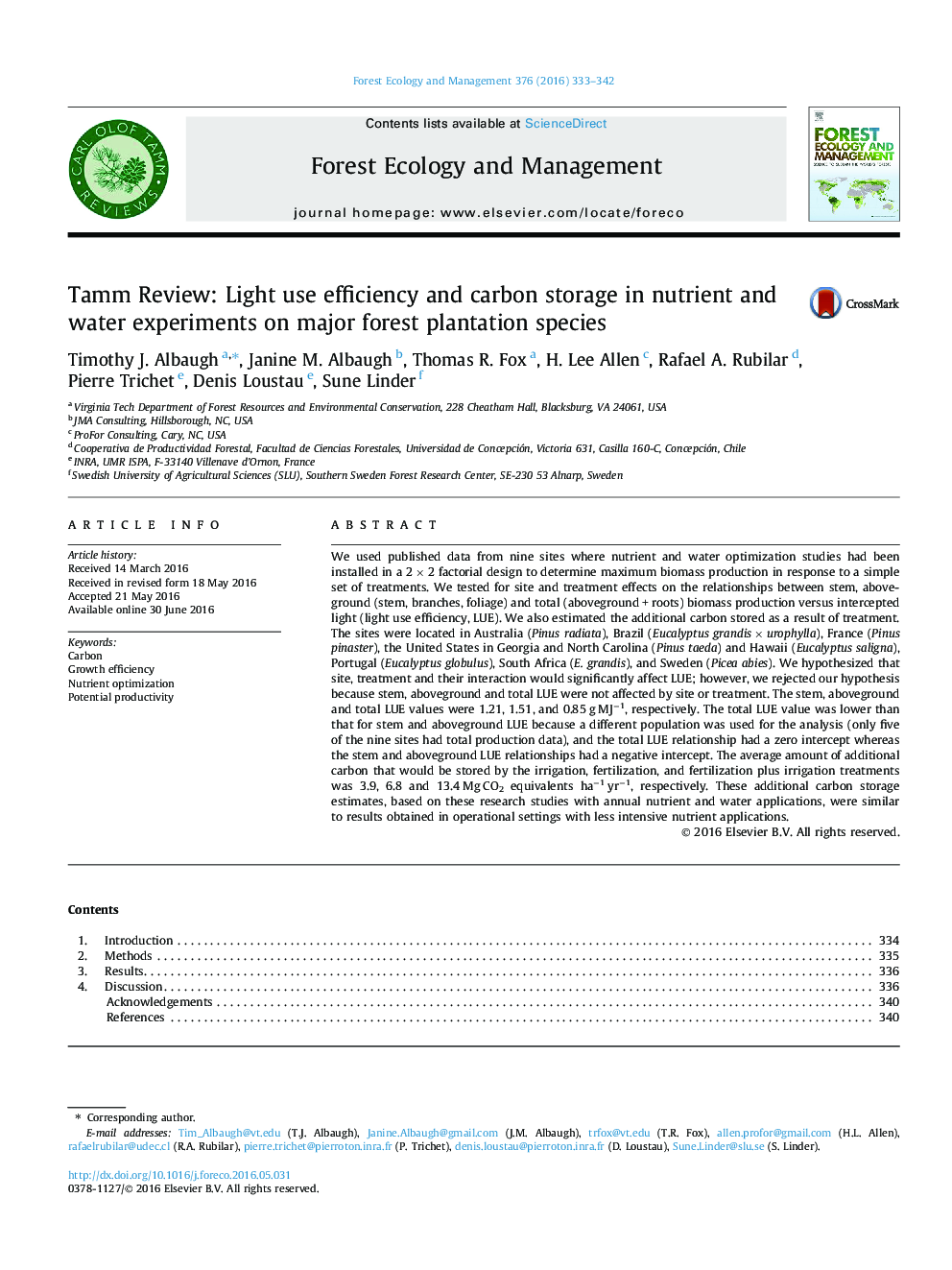| Article ID | Journal | Published Year | Pages | File Type |
|---|---|---|---|---|
| 6542090 | Forest Ecology and Management | 2016 | 10 Pages |
Abstract
We used published data from nine sites where nutrient and water optimization studies had been installed in a 2 Ã 2 factorial design to determine maximum biomass production in response to a simple set of treatments. We tested for site and treatment effects on the relationships between stem, aboveground (stem, branches, foliage) and total (aboveground + roots) biomass production versus intercepted light (light use efficiency, LUE). We also estimated the additional carbon stored as a result of treatment. The sites were located in Australia (Pinus radiata), Brazil (Eucalyptus grandis Ã urophylla), France (Pinus pinaster), the United States in Georgia and North Carolina (Pinus taeda) and Hawaii (Eucalyptus saligna), Portugal (Eucalyptus globulus), South Africa (E. grandis), and Sweden (Picea abies). We hypothesized that site, treatment and their interaction would significantly affect LUE; however, we rejected our hypothesis because stem, aboveground and total LUE were not affected by site or treatment. The stem, aboveground and total LUE values were 1.21, 1.51, and 0.85 g MJâ1, respectively. The total LUE value was lower than that for stem and aboveground LUE because a different population was used for the analysis (only five of the nine sites had total production data), and the total LUE relationship had a zero intercept whereas the stem and aboveground LUE relationships had a negative intercept. The average amount of additional carbon that would be stored by the irrigation, fertilization, and fertilization plus irrigation treatments was 3.9, 6.8 and 13.4 Mg CO2 equivalents haâ1 yrâ1, respectively. These additional carbon storage estimates, based on these research studies with annual nutrient and water applications, were similar to results obtained in operational settings with less intensive nutrient applications.
Related Topics
Life Sciences
Agricultural and Biological Sciences
Ecology, Evolution, Behavior and Systematics
Authors
Timothy J. Albaugh, Janine M. Albaugh, Thomas R. Fox, H. Lee Allen, Rafael A. Rubilar, Pierre Trichet, Denis Loustau, Sune Linder,
